Trust has always been important from a marketing perspective.
But in my opinion, it’s never been more important than it is today.

That’s because so many consumers have an underlying cynicism about brands and companies.
And why wouldn’t they be skeptical?
Marketing communications account for 70% of today’s spam complaints.
Just think of all the scam artists, false advertisements and deceptive advertising techniques people so frequently encounter.
Not to sound pessimistic, but modern consumers have a good reason to be suspicious.
As a marketer, you have to put your audience at ease.
And social media is a great way to do that.
Facebook in particular is ideal for creating trust.
You can even use it to turn casual fans into die-hard brand advocates.
In fact, Facebook has been instrumental in helping me expand my following.
As of right now, I have nearly 1 million followers on my Neil Patel page, and it’s growing every day.
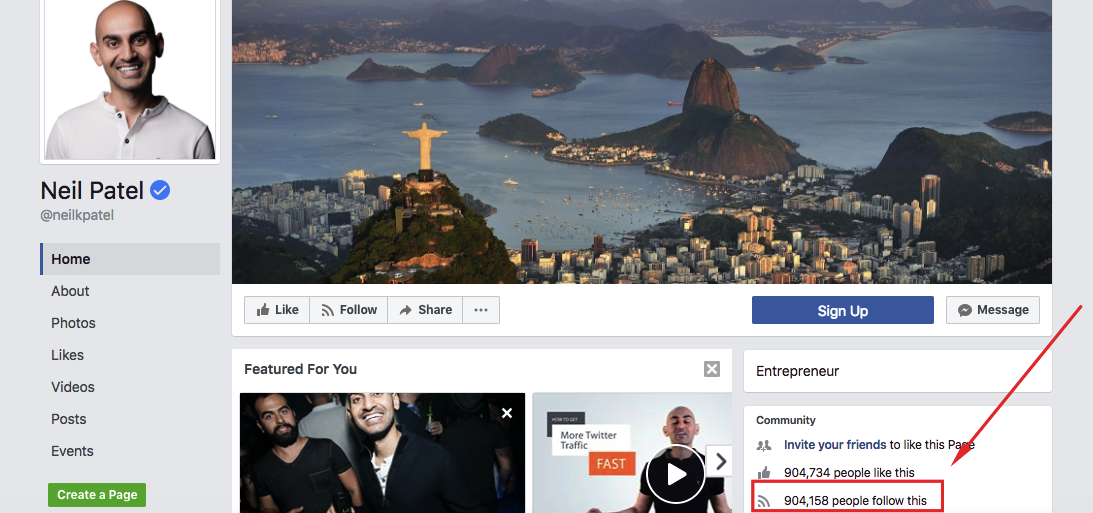
In this post, I’d like to cover 18 essentials mandatory for boosting the trustworthiness of your Facebook page.
These tactics have worked for me and countless other brands, and they can work for you too.
1. Verify your page
Just like on Twitter, Facebook has a feature where you can add a verification badge as long as you’re a public figure, media company or brand.
Here’s mine:
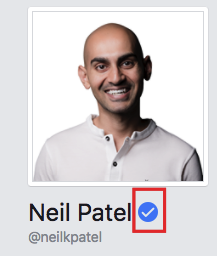
It’s a simple way to prove it’s actually you and not a fake account.
Here are the steps involved in getting your Facebook page verified:
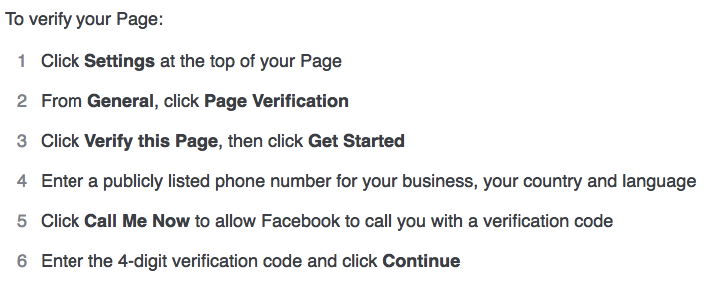
Check out this guide from Facebook for more information on the process.
2. Use your core branding elements
In order to build a solid brand, you need to have identifiable branding elements like a formal logo, recognizable color scheme, style, etc.
Facebook gives you an excellent opportunity to reinforce your brand, which helps with trust building.
Include a profile picture and a background picture that incorporate your core branding elements.
Take TechCrunch for example:

They use their signature green and white color scheme along with their logo.
3. Beef up your About page
The About page of your website is important.
In fact, “52% of people” want to see it on your website’s homepage.
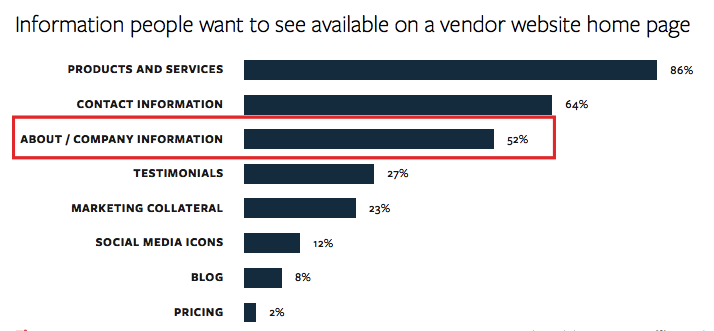
It only makes sense to create a robust Facebook About page.
Here’s a good example from Chris Guillebeau:
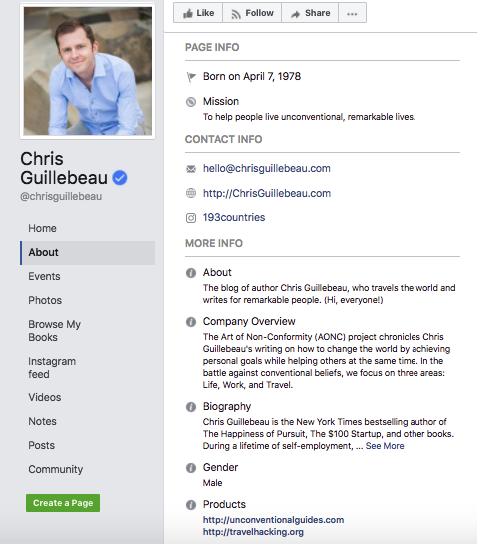
Notice how he succinctly fills visitors in on his key info?
4. Include contact info
According to the same study from KoMarketing I referenced above, including contact information on your website is even more important than having an About page.
They found 64% of people want to see your contact information after arriving on your homepage.
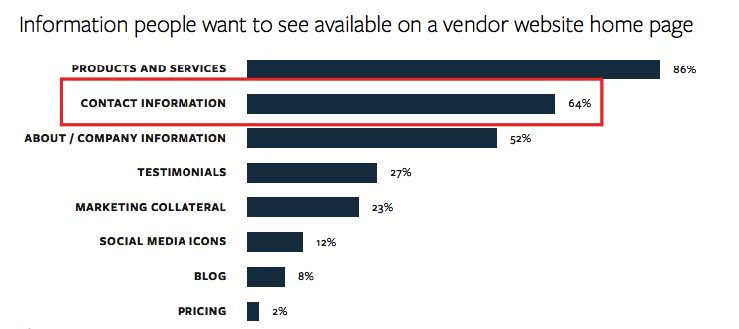
Of course, you’ll want to include this on your Facebook page as well.
Include as much info as you can.
Ideally, also include a phone number because this tends to be a significant trust factor.
Here’s what I have for my contact info:
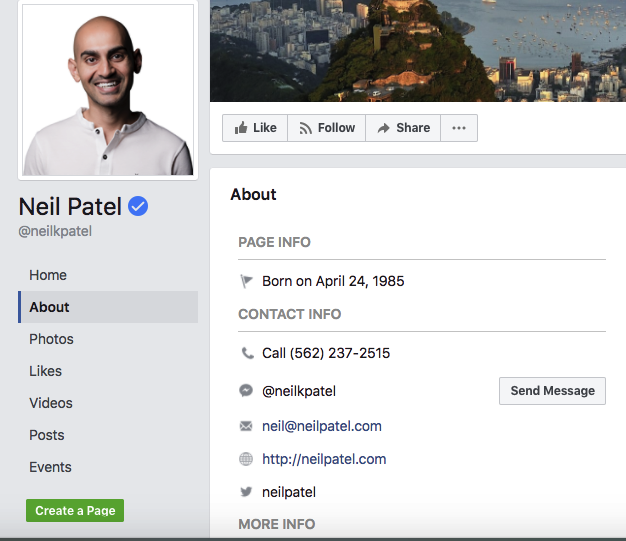
5. Link to your website
Any time you can create a link pointing to your website, you should do it.
This is just another opportunity for referral traffic.
It can also add to the trust users can feel from your Facebook page.
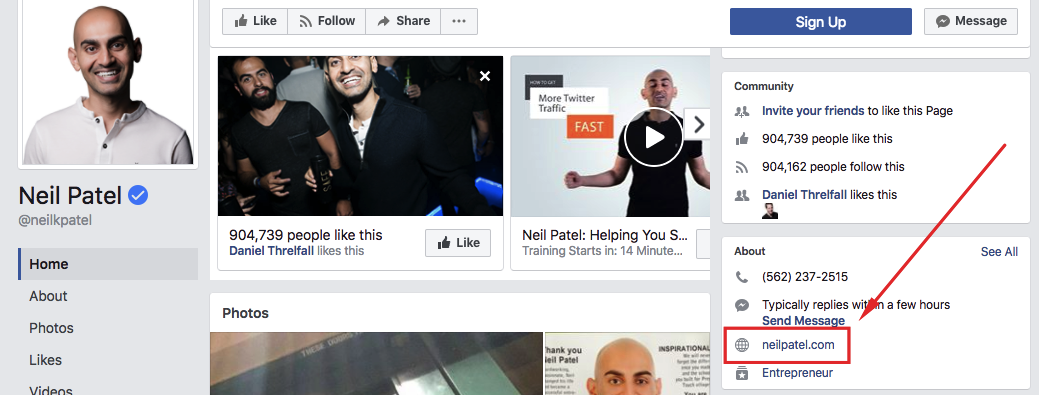
6. Post personal pictures
Even if you’re a massive, big-name brand, you still want to create a genuine connection with your audience.
You want to come across as being transparent and authentic.
One thing I love about Facebook is that it enables you to combine business with pleasure.
I know it’s helped me increase my credibility by allowing me to show a bit of my own personality.
If you’ve ever scrolled through my pictures, you’ll see stuff like this:
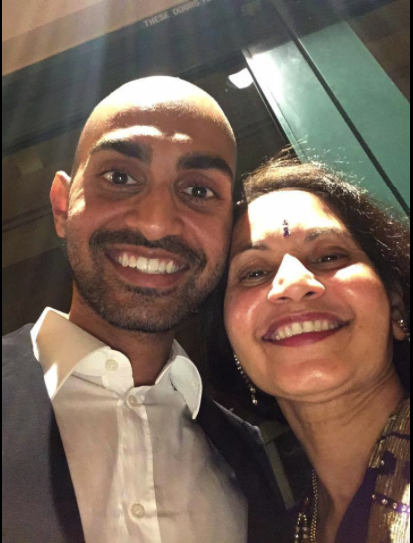
That’s my mom and me.
Or this:
That’s my nephew and me having an epic intergalactic battle.
You want to be professional, but don’t be shy to share some personal information on your Facebook profile to help you gain trust and to be more likable.
7. Include behind-the-scenes content
Another way to forge a connection with your audience is to let them see what’s bubbling beneath the surface.
Give them a glimpse of what your team culture is like by including some behind-the-scenes content.
Here’s a great example from HubSpot:
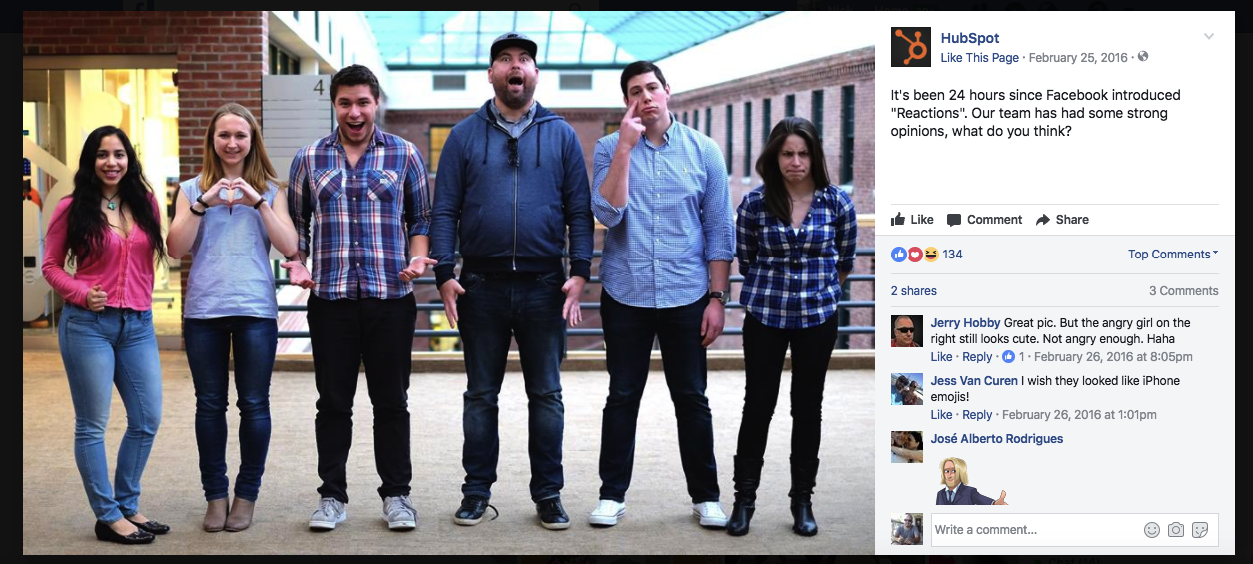
8. Feature influencers
I’m sure you know by now just how powerful leveraging key influencers can be.
Associating your brand with an influencer in your industry is almost guaranteed to elevate your trustworthiness.
The bigger the influencer, the bigger the impact.
One of the best in the business at doing this is Tim Ferriss.
Scroll through his Facebook photos, and you’ll see him with countless celebrities and influencers.
Here he is with the founders of Shopify:
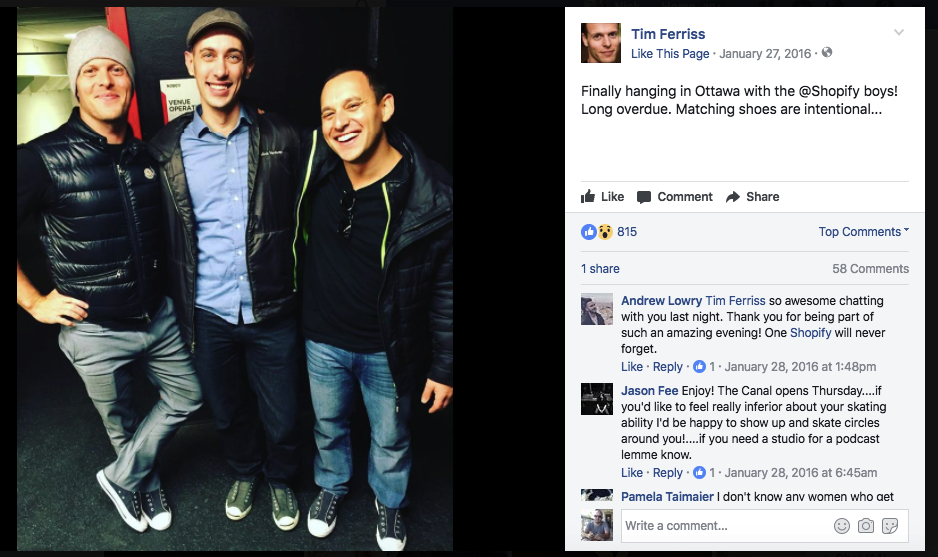
And here he is with author and tidying master Marie Kondo.

I know this isn’t viable for everyone, especially if you’re a new or small brand.
But it can have a profound impact on how much your audience will trust you if you can pull this off.
9. Post media coverage
Again, this won’t be realistic for everyone.
And I know this is easier said than done.
But including any type of media coverage you’ve received can increase your trustworthiness significantly.
Here’s a quick snippet of me on Viceland as an example:

10. Add videos
We all know video marketing is blowing up.
Just look at the massive rise of mobile video over the last few years:
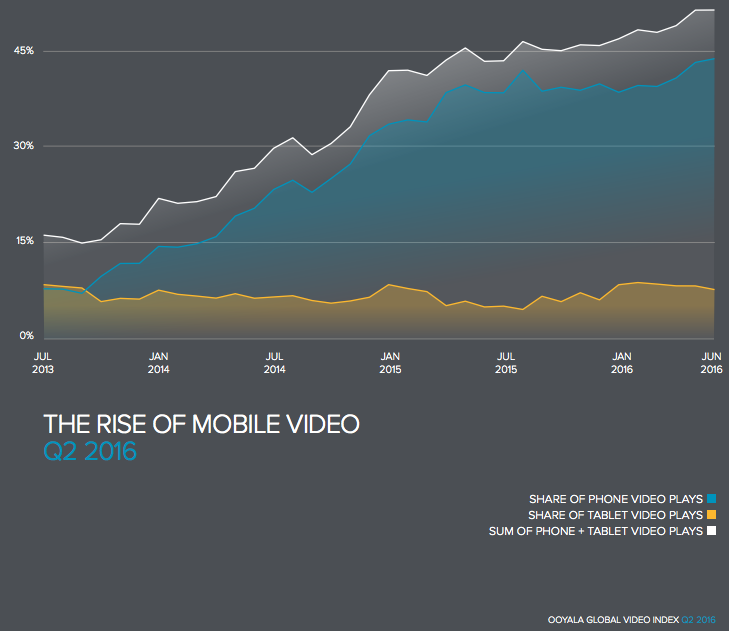
Why wouldn’t you want to get in on the action?
I’ve found that adding video to my Facebook page has helped me increase engagement while establishing myself as a trusted voice in the digital marketing realm.
I make it a point to include videos toward the top of my page.
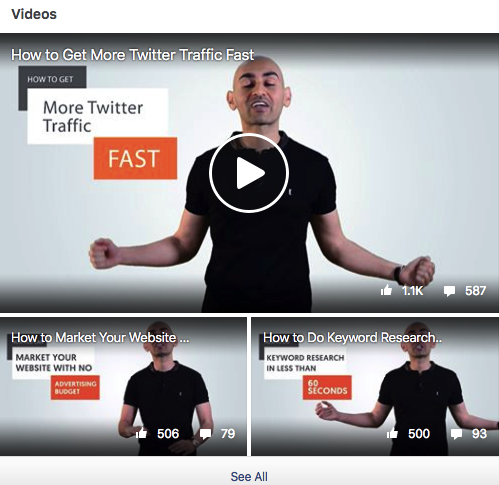
By clicking on the “Videos” section of the sidebar or on “See All,” visitors can check out my full archive of videos.
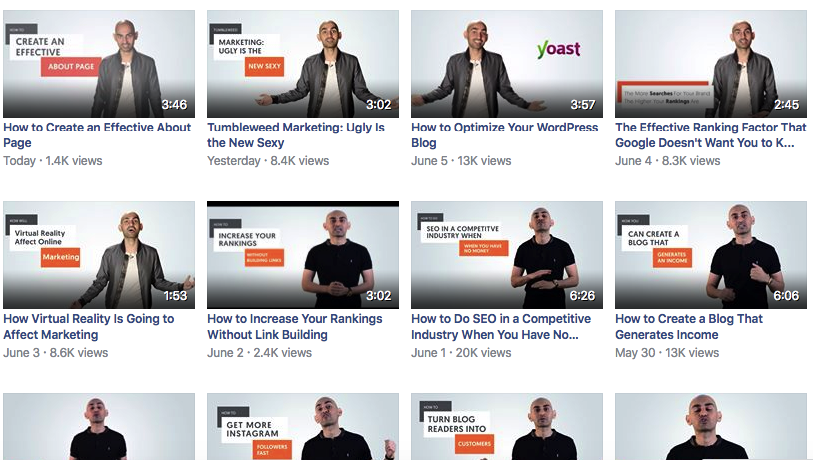
If you haven’t experimented with videos yet, I strongly recommend giving them a go.
11. Take advantage of Facebook Live
But why stop there?
Facebook and several other social platforms now allow you to create live streams.
You should be interested because “Facebook Live Stream search popularity has risen over 330% since Facebook Live’s rollout.”
Engagement is off the charts, and I can’t think of a much better way to quickly boost your trustworthiness.
Just think about it.
People can watch your videos in real time and get to know you intimately, and you can instantly respond to their questions and comments.
Darren Rowse of ProBlogger takes full advantage of this new trend with great success:
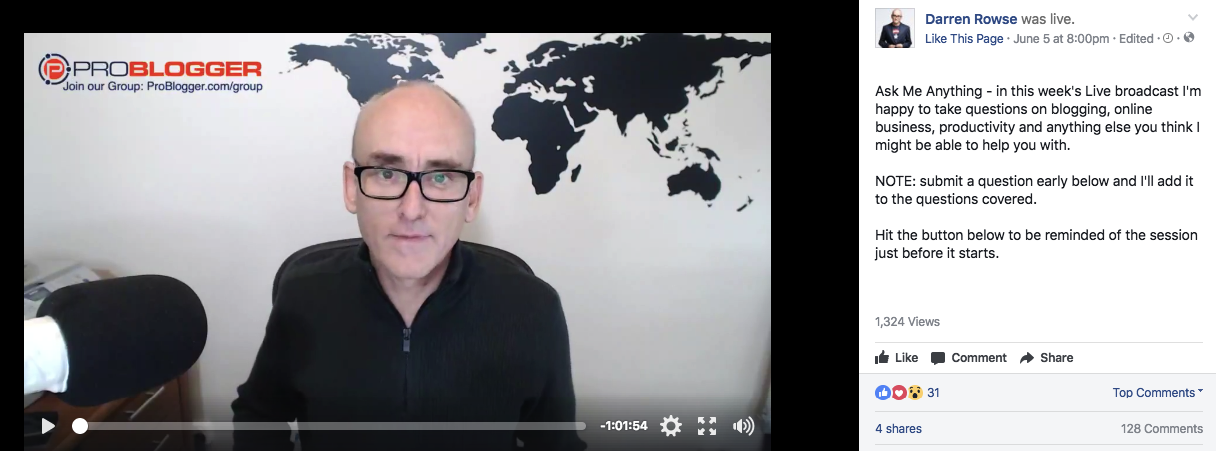
You can check out his archive of videos for ideas and inspiration.
12. Inform rather than sell
The beautiful thing about inbound marketing, and content marketing in particular, is that it gives brands a way to advertise without overt selling.
Rather than blasting your demographic with mind-numbing marketing messages, content marketing allows you to educate, inform and entertain them.
This way they’re learning about your brand and getting real value in an unobtrusive way.
My Facebook policy is to inform my audience—not to sell to them.
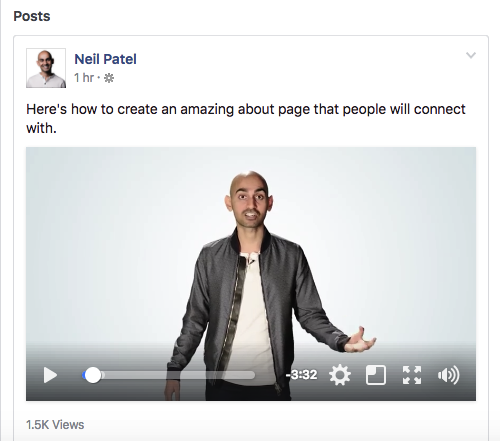
This has been a huge contributor to my success, and I recommend you take the same approach.
13. Stick to your central theme
I’m sure you’ve heard the expression “Jack of all trades, master of none.”
This is what you want to avoid with your Facebook page.
In order to establish trust, you need to focus on your core competencies and not try to be everything to everyone.
Let’s go back to Darren Rowse.
His name is synonymous with one thing: blogging.
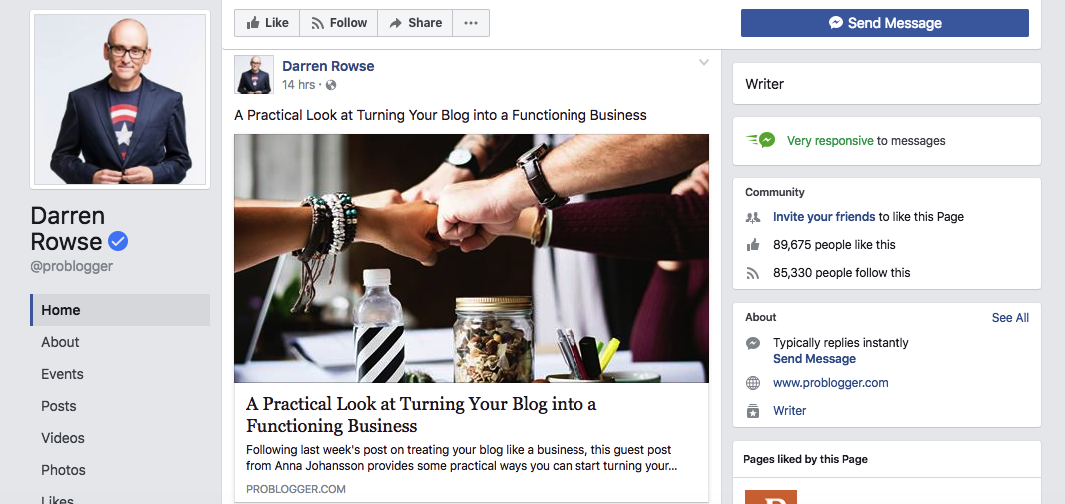
Not home renovation or gardening or crocheting.
It’s just blogging.
This is what has allowed him to be one of the top experts on the topic.
Be sure you’re doing the same and sticking with a central theme.
14. Follow a consistent posting schedule
According to an article from CoSchedule that analyzed research from 10 different studies, one post per day is the recommended posting frequency on Facebook.
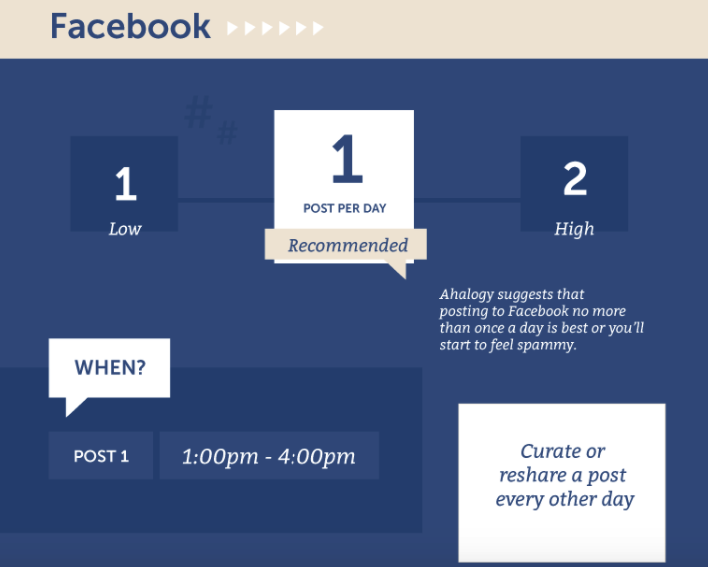
Unlike on other platforms, like Twitter or Pinterest, where posting several times a day is acceptable and even encouraged, one post a day tends to work best on Facebook.
I do at times post more often as do many other brands, but this research tells us one important thing.
You need to get in the habit of consistently posting or at least curating fresh content.
15. Respond to comments
You know if you’re getting a lot of engagement, you’re winning on Facebook.
But to keep the momentum going and keep people interested, you need to respond as much as you possibly can.
That’s what I try to do.
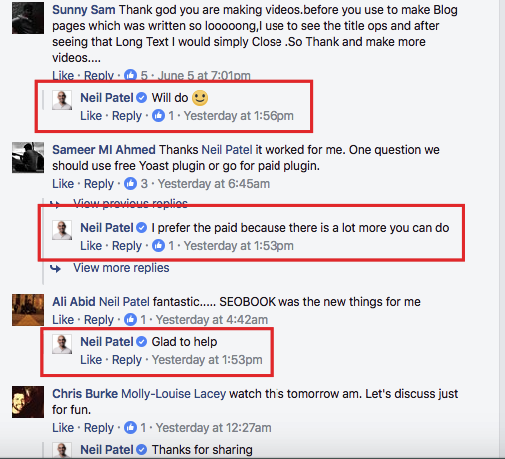
I know it can be time consuming, but this is a must for building real trust with your followers.
16. Ask for input
Looking for ideas on which features to include in your new product?
Or wondering what topics to cover on your blog?
Just ask your Facebook followers for their input.
This is a great way to perform market research, crank up engagement and make your audience feel valued.
Here are a couple of specific examples from Mavrck:

You can get more ideas in this post.
17. Publish an occasional poll
Polls are another awesome way to engage your audience.
It’s a quick and easy way for them to give their opinions, feeling included.
Visit this page from Facebook to learn how to publish polls.
18. Have fun
One last thing.
Social media is meant to be fun.
It’s not meant to be overly formal or rigid.
So another key factor in trust-boosting is to have fun with it and let your personality shine through.
Letting your hair down, so to speak, can help you get the trust you’re seeking.
Conclusion
When you get right down to it, trust equals revenue.
Gaining trust is like knocking down the initial domino, which leads to a host of other benefits like engagement, a big following, leads, conversions and ultimately sales.
And the way I see it, Facebook is one of the best platforms pound-for-pound for creating trust.
You just need to understand which elements to leverage and put in the work to give your audience what they’re looking for.
What makes you trust a brand on Facebook?

